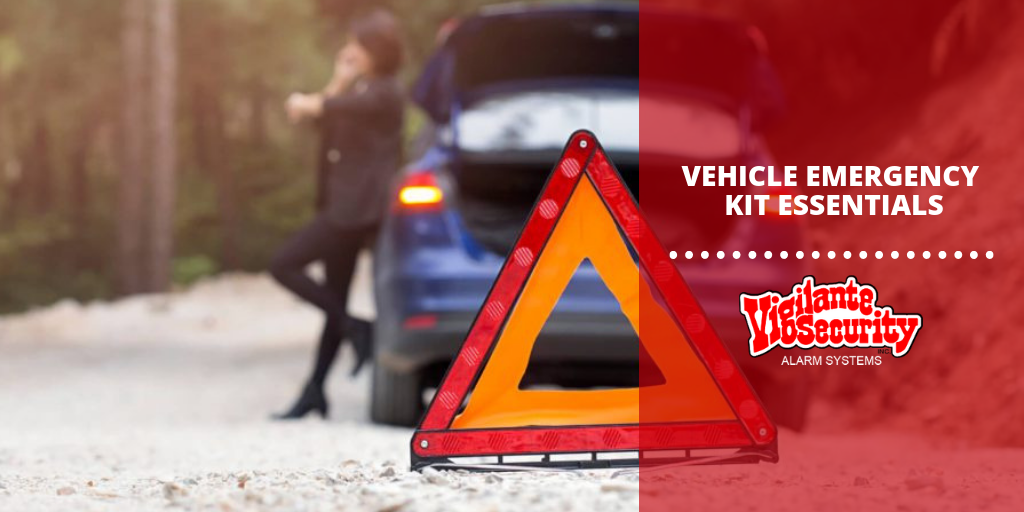Vehicle Emergency Kit Essentials
At Vigilante Security we offer you the most reliable and technologically up-to-date alarm systems and camera systems for protecting your home or business property. But disaster can strike when you’re on the road, too. With the weather getting colder, we want you to be prepared and safe no matter where you are, so here are the essential elements of a car safety kit. Keep them tucked away in the trunk or behind a seat, and you’ll be much better equipped to deal with any issues while you’re out and about.
Jumper Cables with Instructions
This basic item can save the day when you’ve accidentally drained the battery by leaving a light on or leaving the door cracked. Plus, having jumper cables gives you the chance to be the Good Samaritan for a fellow driver who finds themselves stranded in a parking lot.
Hazard Triangles or LED Flares
If your car breaks down by the side of the road, you’ll need to protect it from other drivers while you’re waiting for assistance, especially if it’s dark outside. Reflective hazard triangles or LED flares give other motorists enough warning to get out of your lane, preventing an accident. LED road flares are replacing the traditional burning flare. They are safer, as there is no burning, can be driven over and are reusable.
Flashlight and Batteries
Speaking of after dark, a flashlight will be essential if you have a vehicle emergency past nightfall. Even a simple repair can be impossible to make in the dark. Include new batteries still in their package – don’t put them in the flashlight to prevent them from corroding.
Car Jack and Lug Wrench
Your vehicle should already come with these tools so that you can change a tire in case you get a flat. But, especially if you’ve bought a used vehicle, make sure you know where the car jack and lug wrench are and how to use them. Make sure there is a spare that is filled. Also, spare tires are an option on many new cars today.
Cell Phone
Most people carry a phone with them everywhere these days, but keeping a charged pre-paid phone (with charger) in your kit gives you extra peace of mind – in case your phone fails or in case you’ve forgotten it. And remember that 911 operators can’t locate you by the position of your phone, so you’ll need to give them as much information as possible about your location.
Ice Scraper
Investing in an ice scraper to keep in your car – they’re only a few dollars – means you won’t have to frantically rummage through the house for flimsy spatulas. Leave the defroster running on high for 5 minutes before you try to scrape the ice off, and never, ever pour hot water on your windshield, as it may crack the glass.
First-Aid Kit
From Band-Aids for minor scrapes to bandaging for larger wounds, a well-stocked first-aid kit can help in case of personal injury.
Food and Water
If you end up stranded for a few hours, this can make all the difference. Consider keeping four bottles of water (or more, depending on how many passengers your vehicle holds) and some high-protein energy bars in your emergency kit to keep everyone fed and watered until assistance arrives.
For even more suggestions on vehicle emergency kit essentials, take a look at DMV.org’s recommendations on How to Pack An Emergency Kit, Ready.gov’s thoughts on Emergency Kit Storage Locations, and ConsumerReports.org’s Roadside Emergency Kit list.

